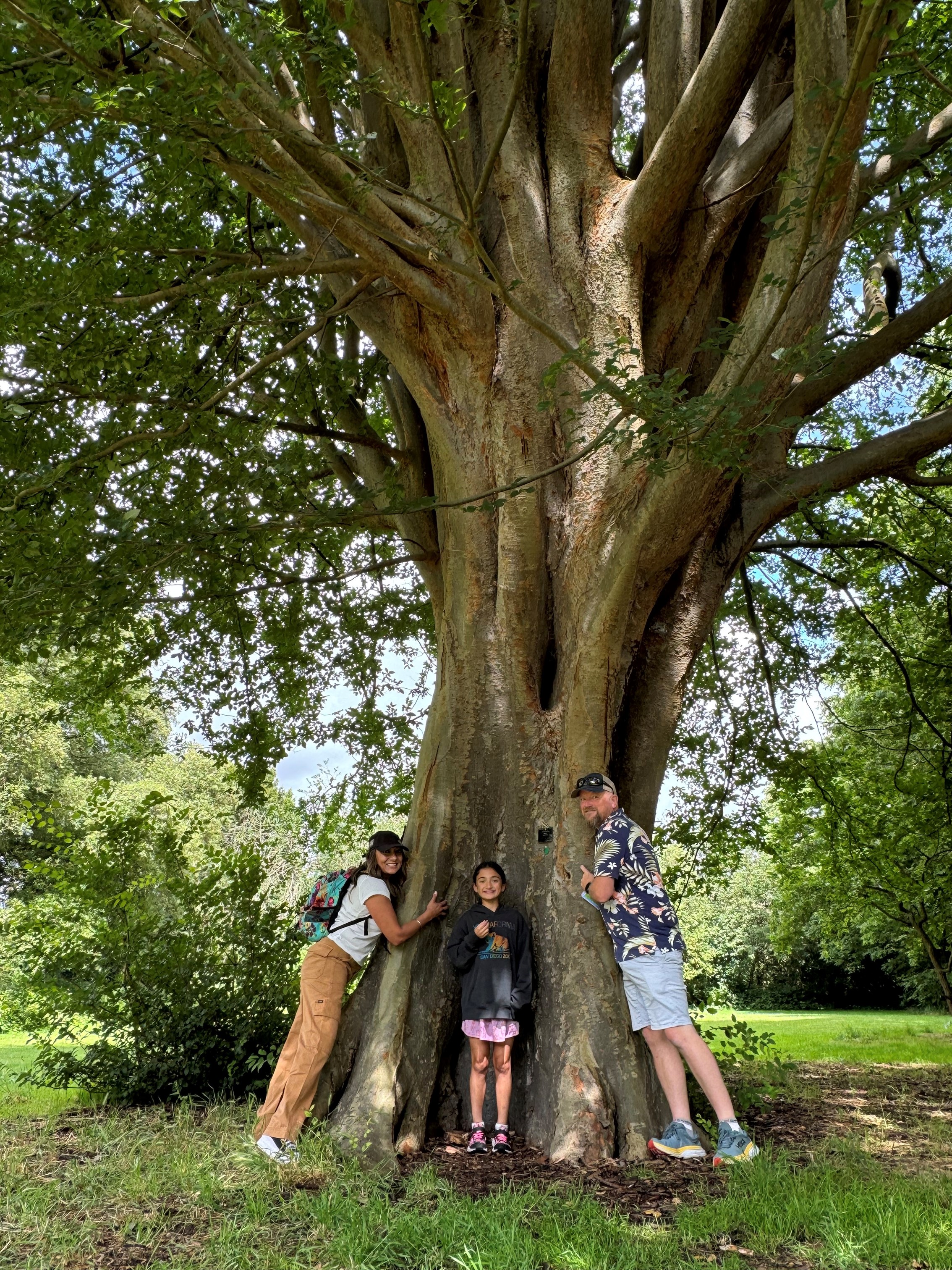Connecting and tree-ting with nature
The fragile symbiosis between human beings and our planet is at risk. Patient–planetary health co-benefit frameworks are increasingly being recognized, and health professionals are encouraged to take a more active role in climate change mitigation efforts.[1]
My efforts to provide good patient care require more consideration of the planet, and there are many recognized actions that health professionals can pursue in this regard.[1] Connecting within nature is an action I can promote in my practice.[1]
My knowledge and love of trees have grown exponentially since I met my partner, a horticulturalist; his passion for trees is infectious. I feel connected to nature when I am among trees. Not only do they provide oxygen, absorb greenhouse gases, prevent soil erosion, produce food, and provide shelter, but these ancient organisms also offer me solace. The revitalizing aroma of my coffee in the morning; the melodious sound of a western meadowlark perched on a giant Colorado spruce; the refreshing green space that exists at my home in the form of Norfolk pines, fig trees, swamp oaks, and hibiscus; the fruit-bearing orchard; and my invigorating runs in the forest, with its earthy aroma, all contribute to my inner peace.
I was also recently introduced to the concept of forest bathing by a friend in Kamloops, who is always trying to better our planet while practising as a neurologist. She reminisces about how, for her, forest bathing became a retreat and a peaceful refuge, alone and with others, during the pandemic. Forest bathing, or shinrin-yoku, is a meditative practice that involves being present with and mindful of your senses while you are in a woodland setting. It was conceptualized in the 1980s by the Japanese Ministry of Agriculture, Forestry and Fisheries to prevent further nature deprivation and protect the diminishing forests and is based on a concept of reciprocity. As people immerse themselves in nature and receive physical and mental benefits, they want to protect and preserve this environment.[2] Studies have shown that shinrin-yoku can lower cortisol concentrations, pulse rates, and blood pressure.[2]
As forest bathing becomes more popular in Western culture, we can also take inspiration from the practices followed by Indigenous Peoples that emphasize a spiritual bond with nature and a responsibility to respect, nurture, and protect the land.
As for local academic research, the Multidisciplinary Institute of Natural Therapy, an initiative of the University of British Columbia’s Faculty of Forestry, is exploring the physiological and psychological effects of forest therapy on humans. It is developing innovative ways of bringing the sounds, scents, and lighting of the forest indoors—virtual forest bathing—making it accessible to all.
My efforts to help patients connect with nature are gaining momentum. I have created a mini–green space in my clinic. The waiting room is full of plants and small trees, and the TV plays the nature channel, so the sound of nature emanates in every room. My patients’ favorite room in the clinic has a wall-sized mural of a forest, and they always comment on how calm they feel in that space.
I am also a registered prescriber of the PaRx program, whereby physicians can offer a “prescription for nature,” asking patients to be present in nature for 2 hours per week, 20 minutes at a time, and a Discovery Pass, which reduces barriers to nature across Canada. PaRx is an evidence-based program that originated in the US over a decade ago and was launched here in November 2020 by the BC Parks Foundation, expanding to many provinces since then. The PaRX website lists numerous studies showing how spending time in nature has positive effects on human health.
Finally, having participated in Doctors of BC’s annual Walk with your Doc event, I wonder whether next year’s walks could be organized as forest-bathing events.
Ultimately, whatever the impetus, I encourage everyone to connect with nature and perhaps even hug a tree.
—Jeevyn K. Chahal, MD

Dr Chahal with her family at Kew Gardens in London, UK.
hidden
 |
| This work is licensed under a Creative Commons Attribution-NonCommercial-NoDerivatives 4.0 International License. |
References
1. Redvers N. Patient-planetary health co-benefit prescribing: Emerging considerations for health policy and health professional practice. Front Public Health 2021;9:678545.
2. Park BJ, Tsunetsugu Y, Kasetani T, et al. The physiological effects of shinrin-yoku (taking in the forest atmosphere or forest bathing): Evidence from field experiments in 24 forests across Japan. Environ Health Prev Med 2010;15:18-26.

